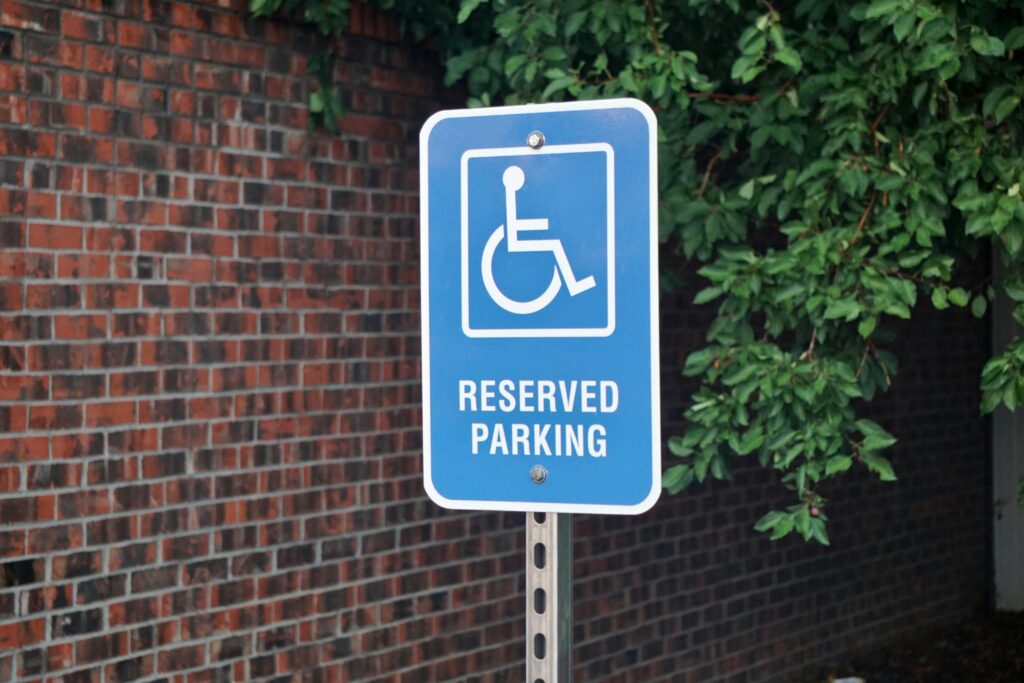As the point of entry for the majority of public facilities, the accessibility of a site’s parking lot has the capacity to shape the perception of an entire facility in the eyes of disabled visitors.
In this blog, we will explain some of the ways you can make your parking lot accessible and inclusive as well as the benefits to providing accessibility as a whole.
From a legal perspective, The ADA is clear on the rights of disabled motorists in the United States. Reasonable adjustments must be made to car parks to ensure accessibility for disabled motorists.
However, maintaining accessible parking areas should be seen not as a necessity and tick-box exercise, but an opportunity to show people with disabilities that accessibility is a genuine consideration in the delivery of site’s services, which has many benefits in its own right.
The first thing to be aware of when it comes to accessibility is the very beginning of a typical visitor journey with your site or its services. Once people have investigated your pre-visit information, represented normally by your website, social media, and advertisements – the car park, whether through investigation on Google Maps or the customer physically arriving your site, is the first signifier of your organizations’ attitude towards people with disabilities and their requirements.

If your site does not provide an accessible and inclusive car park, it is most likely that people with disabilities will write off visiting entirely, especially those with physical disabilities, who often make extra considerations when planning their journey. This is an unfortunate reality people with disabilities face daily, as the likelihood that their access requirements will be met by places they visit is very low, often leading to their time being wasted. A real world example of this and equivalent would be a visually impaired person visiting a cafe and discovering that they have no Large Print or Braille menus provided for them. Another would be of a deaf person visiting a reception desk at a bank and finding that the counter does not have an induction loop or hearing enhancement system fitted.
It’s not just about providing the minimum expected parking spaces, multiple factors determine the accessibility of a parking lot. For instance, accessible ticket machines must be provided and available within a close vicinity to Blue Badge parking spaces. Additionally, appropriate wayfinding signs at the entrance to the car park and at each change in direction should be provided to direct motorists to the designated accessible parking / people with a disability to drop-off spaces.
Businesses that do make the effort to implement best practice car parks will often see the benefits very quickly, minimizing the risk of legal action from disabled visitors while gaining a noticeable increase of disabled visitors on the whole.
So now that we’ve covered some of the benefits and consequences, what actually makes a car park accessible? Aside from meeting the minimum requirements for dimensions as outlined by the BS8000, which is determined by your local law, there are some key factors that are applicable best practice regardless of the specifics of certain legislation. Some of these include;
Since electric cars are increasingly commonplace, we frequently recommend that EVCP (Electric Vehicle Charge Points) are installed in a way that provide accessibility provision, such as ample space for wheelchair users, as well as accessible car parking spaces for electric vehicles.
There are many other elements to consider. For instance, terminology and iconography on accompanying signage must be appropriate (Accessible Parking, Blue Badge parking – not “Disabled Parking” or “Handicap Parking”) and the symbols used to identify accessible parking spaces should clearly display the International Symbol of Access (a symbol of a wheelchair).
Beyond the parking spaces themselves, the routes of entry to your site must be clearly marked out in a way which can be seen by people with visual impairments, offering color contrast, and being of an appropriate dimensions so as to accommodate wheelchair users. Furthermore, to accommodate visitors arriving via taxi or public transport, dropped curbs for any drop-off zones with the correctly associated blister warning surface should be implemented. This is particularly important to disabled people who cannot drive, which actually makes up a large percentage of people with disabilities.
Putting all of these requirements into perspective, it should become clear why people with disabilities are likely to judge your entire site’s accessibility provision based on the design of the parking lot. Simply because it is the first element they are likely to experience, the point of arrival is where they will determine whether they are able to physically access the rest of your site.
The negative impact of an inaccessible parking lot goes beyond discrimination. If disabled people cannot access your site beyond the point of entry, an assumption on the part of service providers and site owners is created that people with disabilities are simply not interested in what they have to offer. However, people with disabilities, like non-disabled people, wants to contribute to society, to go places, and enjoy new experiences. So it is important that businesses take advantage of the opportunity to be inclusive and considerate of their experiences. The benefits go beyond legal compliance and accommodating their rights. Doing what is right ultimately results in a wider, more varied customer base.
How can you ensure that your parking lot is compliant? An access audit can determine how it can be improved to meet universal access standards and be made inclusive to all. Direct Access can offer this service, based on our knowledge of best practice access standards and our lived experience as disabled people.